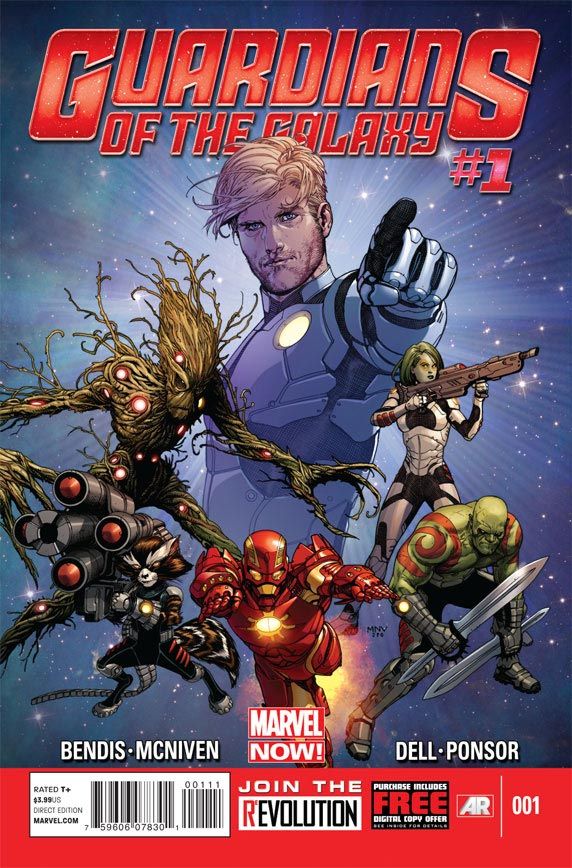Is the goal for comics to become a mainstream form of entertainment an unattainable goal? That seemed to be the angle Tom Spurgeon took on Monday's Deconstructing Comics podcast and in his additional commentary at The Comics Reporter. He feels the industry is better served by regaining a few hundred thousand more devoted readers to restore unit sales to mid-six-figure levels. While comics have shown there is longevity in niche markets, that doesn't eliminate the possibility of also attaining a larger readership.
With March's estimated direct market sales figures showing yet another double-digit month of growth, manga publishers giving anecdotal reports of the manga market stabilizing, and something of a convention boom going on, there's no better time than now to re-examine how comics can secure a healthy and vibrant future. Taking advantage of this growth is tricky because, as Spurgeon mentions, no one is exactly sure why the turnaround happened. Although people complain about DC Comics' New 52 being a mess and Marvel crossovers not having the punch of the Civil War days, overall sales are rebounding. Was it digital comics? Was it the mainstream press for the New 52 or Marvel NOW, or some other stunt? Is it the Hollywood movies?
The truth is that it's probably all of those things and more. There's also been a building cultural acceptance of "geek culture" that is invariably tied to comic books despite the medium not being limited to the superhero/sci-fi/fantasy niche. It might've peaked with last summer's trifecta of blockbusters: AMC''s The Walking Dead television series, and the Hollywood tentpoles The Avengers and The Dark Knight Rises. Of course, comic book adaptations were supposed to be a fad about a decade ago, so it may not be a matter of peaking, but rather a series of peaks.
While the cultural-shift answer may not be satisfyingly concrete for a marketing guy to run with, it does address another thing Spurgeon brought up. Comparing his own apathy to operas, he mentions the disinterest some have to pursuing comic books or graphic novels even when they are exposed to something they admit they like. I've seen this happen too, and it's always frustrating. When they're handed something and end up liking it, great. That doesn't mean they're showing up at the comic book store next Wednesday. And I think that expectation is our mistake on a few levels. The first is that such reluctance to an entire medium more often than not comes from the previous prevailing cultural status quo, which is that comics are a second-class form of communication and/or entertainment. That old thinking says that comics are about as cool as ham radios. Or, to borrow Spurgeon's analogy, operas. The good news is that the cultural shift is saying otherwise. The increasingly loud voice is presenting an upstart opinion that comics are cool, they are smart, they are imaginative, they are creative, they are daring. That voice is followed by a second voice not as loud saying that comics aren't just superheroes. That voice needs to be just as loud as the first. Given enough time, those two voices will be heard and internalized by enough people that it will be just as culturally established as the "comics are for kids" mantra that sprung from the 1950s.
So that all sounds good in the abstract, but how in practical terms does that happen? The good news is that it's already happening, and Spurgeon is right that it's no single magic bullet. Every time a literary graphic novel gets covered on NPR, every time USA Today hypes some new Image Comics series in a genre that isn't superheroes, every time someone on Tumblr randomly posts about some new manga series amid their writings about TV shows and movies -- these little moments chip away at the subconscious programming of past generations. And that's why quality and diversity are so crucial. It's also why creative freedom, creator rights and financial stability are so important. The more solid footing creators have, the more they'll create better content more frequently, giving readers reasons to keep coming back. This new Golden Age that we're in, this new Comics Renaissance, is an amazing start. The size of comics' current audiences, though, don't result in enough financial stability for most creators. We might be headed in the right direction, but more can be done.
DC Comics pulled one of the boldest publishing moves mainstream comics has seen in about 30 years with the New 52. And they backed it up with a marketing onslaught about as strong as one would hope. Marvel NOW! has also been on a big push to bring readers back. These were necessary moves and they've retrieved a number of lapsed readers as well as brought in some new readers. I don't see them bringing in 200,000 more devoted readers who show up at the comic shop every week. But 20 million casual readers will average out to 200,000 weekly readers or more. That's why the TV and movie industries can support such massive budgets. When there are about 114 million TV sets in American households, the television networks don't need every one of them tuned in every day. Since it's such a culturally accepted form of entertainment, Americans average five hours of TV viewing a day. If the cultural shift can be accelerated, and content is also created with casual readers in mind as well, the readership potential will grow exponentially.
Comics for the passionate customers will always be around. That's how comics got this far. But comics can go further. They're limitless. And there's no reason why there can't also be more comics for the masses, creating a more healthy and abundant industry.


